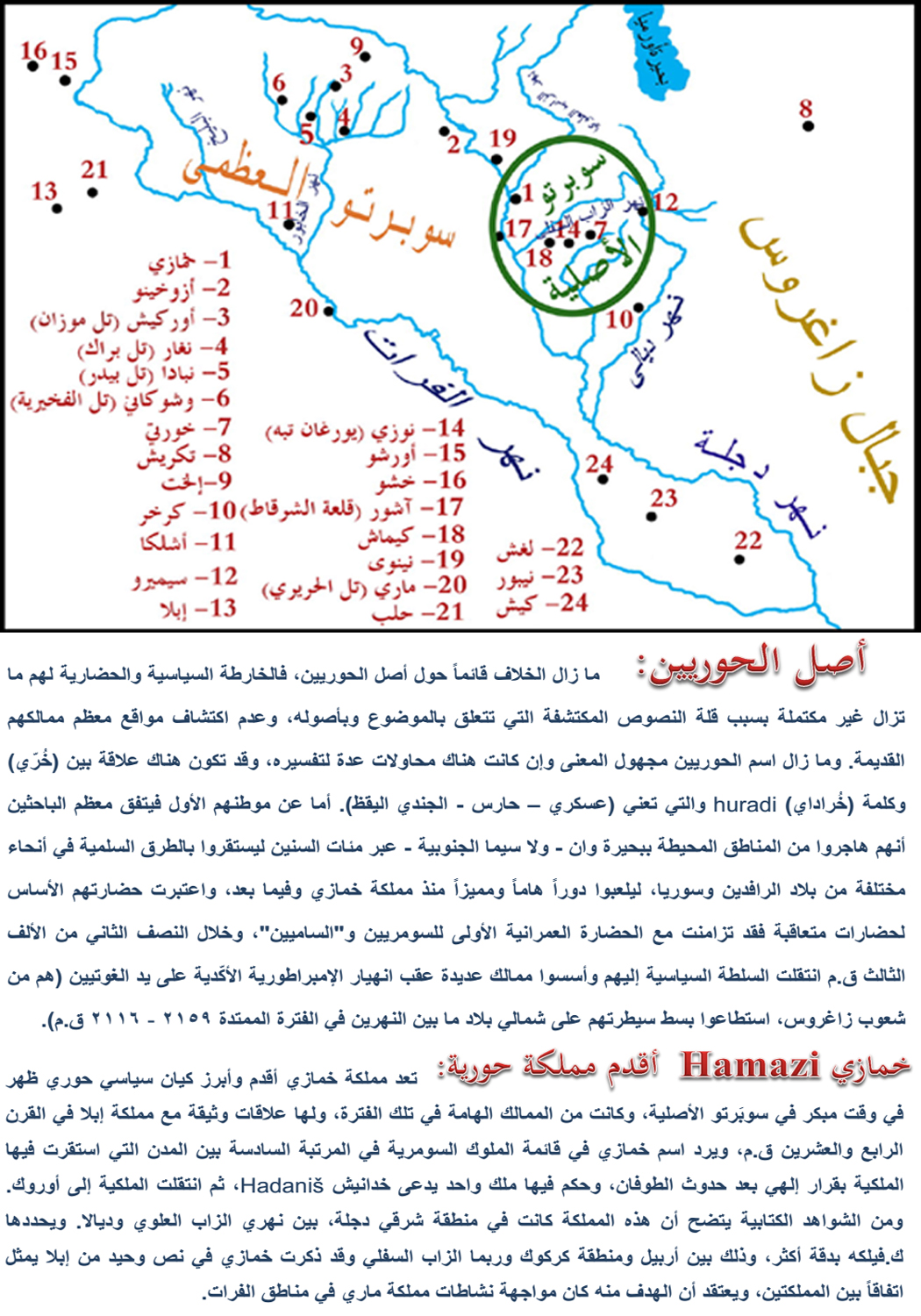
The origin of Hurrians: There is a debate regarding the origins of the Hurrians. The political and cultural map of the Hurrians is still incomplete, due to the lack of texts regarding this subject, and not discovering sites and Kingdome pertaining to them. The meaning of the name “Hurrians” is still unknown, and there were many attempts to explain it. There could be a relation between (huri) and (huradi) which means soldier or guard. As for their original land, most researchers agree that they migrated from the areas around lake Wan (especially the southern areas) to settle eventually in different regions of Syria and Iraq. They played a major role since the Kingdome of Hamazi, and their civilization is considered the foundation on which other civilizations were belt, and it coincided with the first Sumerian and Semitic civilizations. During the second half of the third millennium B.C, the political power shifted into their hands and they established many kingdoms after the fall of the Akkadian empire at the hands of Goutians (Zaghrous people who were able to control northern Mesopotamia between 2159 and 2116 B.C).
Hamazi, the oldest Hurrian Kingdom: Hamazi is considered the oldest Hurrian political entity that emerged early in the original Subartu. It was an important kingdome at that time, and had good ties with the Kingdome of Ebla in the 24th century B.C. The name Hamazi appears in the Sumerian kings list, as the 6th city where a monarchy was established based on a divine decision after the flood. It was ruled by one king (Hadanis), then the monarchy shifter to Uruk. The written evidence shows that this kingdome was located in the area east of the Tigris river, between upper Zab and Diyala river. K. Vilkeh gives a more specific location between Erbil and Kirkuk. Hamazi was mentioned in one text from Ebla, which represents an agreement between the two kingdoms, and it is believed that the purpose behind this agreement was to stand against the expanding activities of Mari Kingdome in the Euphrates regions.